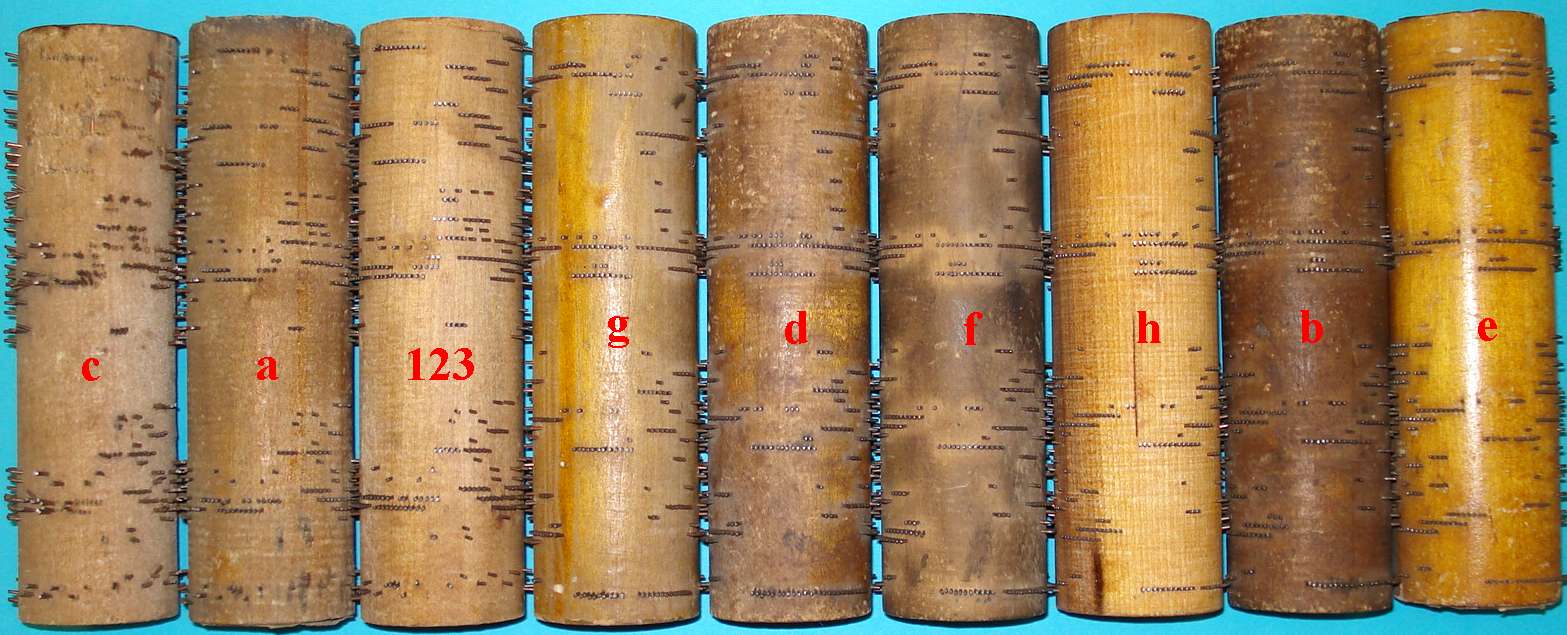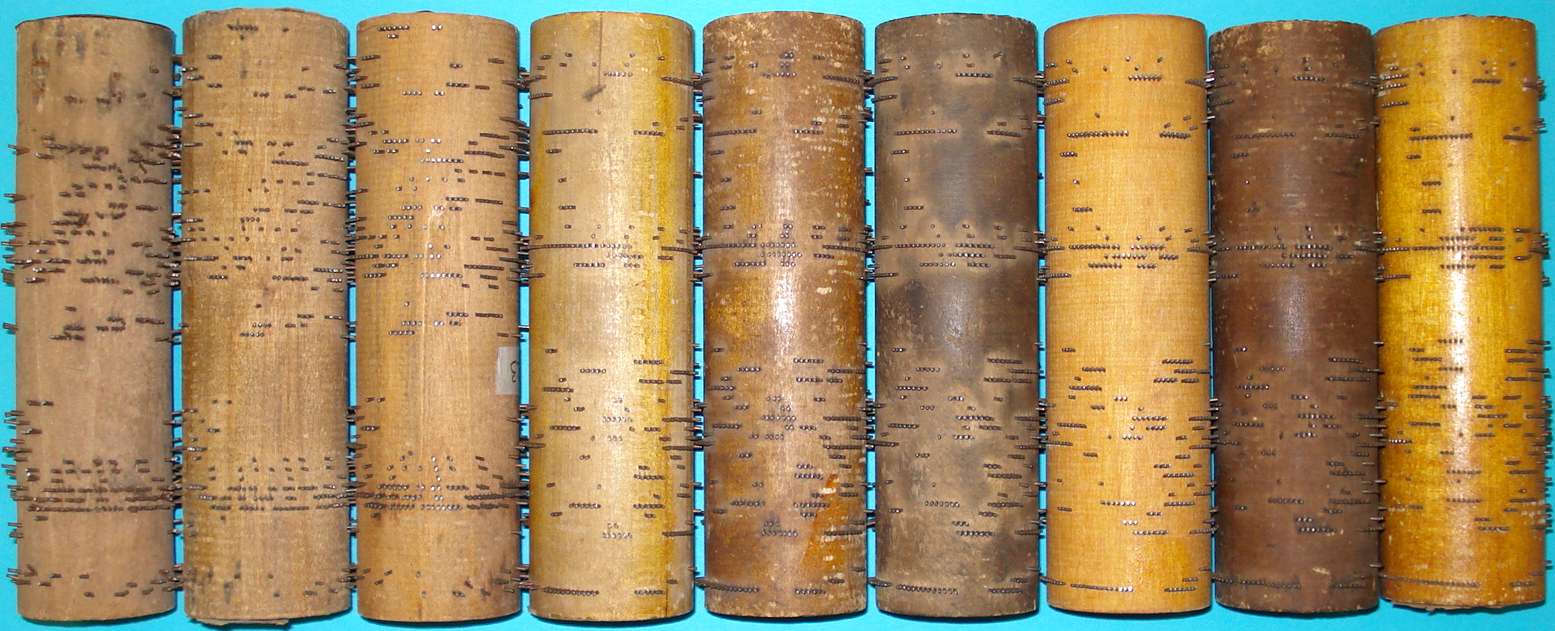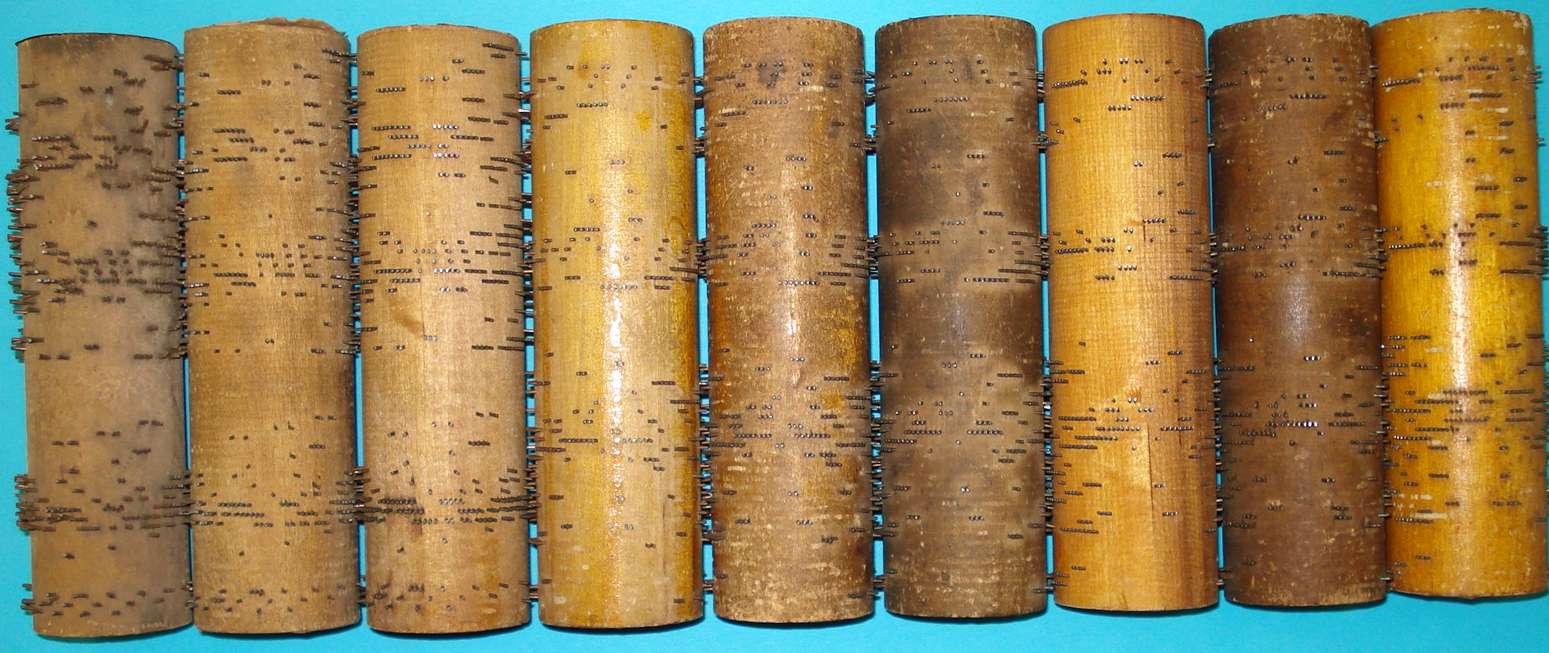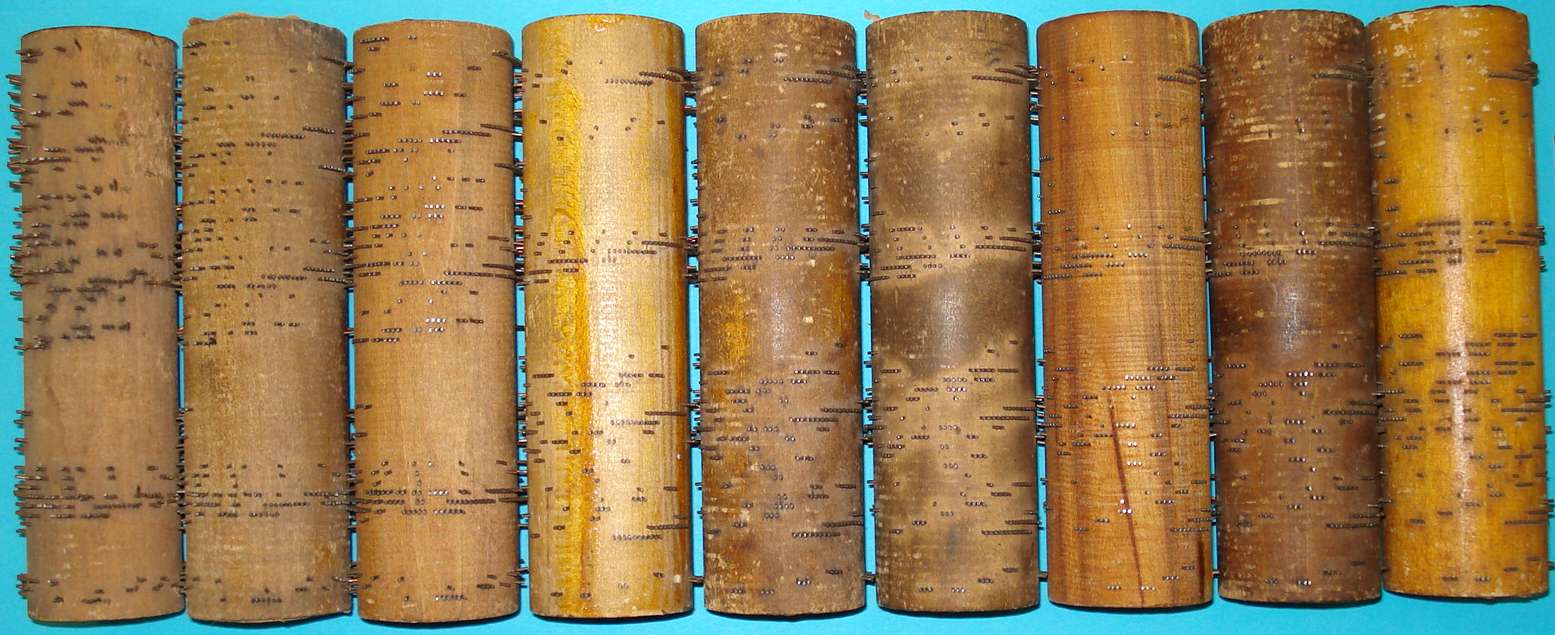-
- 20-note
- 32-note
15,777,910 hits since 2007.06.01
Table of Contents
Photos
Cob #123 Home Sweet Home was very popular and judging by the number of copies still found, was made in large numbers throughout the forty years of production. Maybe this has something to do with the number of pinning patterns. Starting with the early arrangement with extra octave notes on the right in the photos, the next five pinning patterns are very similar. Looking closely at version 123b a single note is found that is different than than the other four of the five versions (see comparison photos below). Notice that version 123 is a completely different arrangement with a much livelier accompaniment. On cob 123c, although it is missing many pins, there are two closely spaced pins almost everywhere that there is a single pin on version 123. “Double pin” versions have also been found for cobs #109 - Marching Through Georgia and #247 - The Devil's Dream.
Cob 123a, although maybe not strictly a different pinning pattern, is included because it is typical of late cobs with fewer pins for many notes making the notes shorter in duration. Several similar copies of cob #123a have been found. See the photos and comments below on late production cobs.
Also included on this page is a photo of an unusual name label found on a late copy, No. I23 Home Sweet Home.
123abcdefgh
123h, 123b compared
The musical arrangements for cob 123 versions g, d, f, h and b are almost identical except for a single note that is changed on 123b.
late production cobs
It is known from patent and other historical documents that the first pinning machines used a pattern with a single hole for each pin to be installed on the cob. And it is common to find cobs that are pinned with very few if any errors, reflecting the one to one correspondence between a hole on the pattern and a pin on the cob. Later production cobs however are often found that vary in the number of pins installed for each note. For example a note with four pins on one cob might be found with three or even two pins on another. The pin count differences occur in different locations on different cobs. These cannot be random pinning errors because the leading pin for the note is almost always present in the correct location and the pin runs are almost always contiguous (leading pin is on the left in the photo). The result is that the timing of the music is not disturbed but the note durations are different.
Because this is so common on later cobs it is possible that a change in the production process may have allowed the variations in pin counts. The photo below shows some examples of late production #123 cobs compared to an earlier copy (designated 123). Cob 123c has the doubled up single pin notes, cob 123a has fewer pins in many runs and the undesignated cob on the right is just a mess. Notice that many notes on the right hand cob are run together as the pinning machine must have been intermittently stuck in the “on” position.







